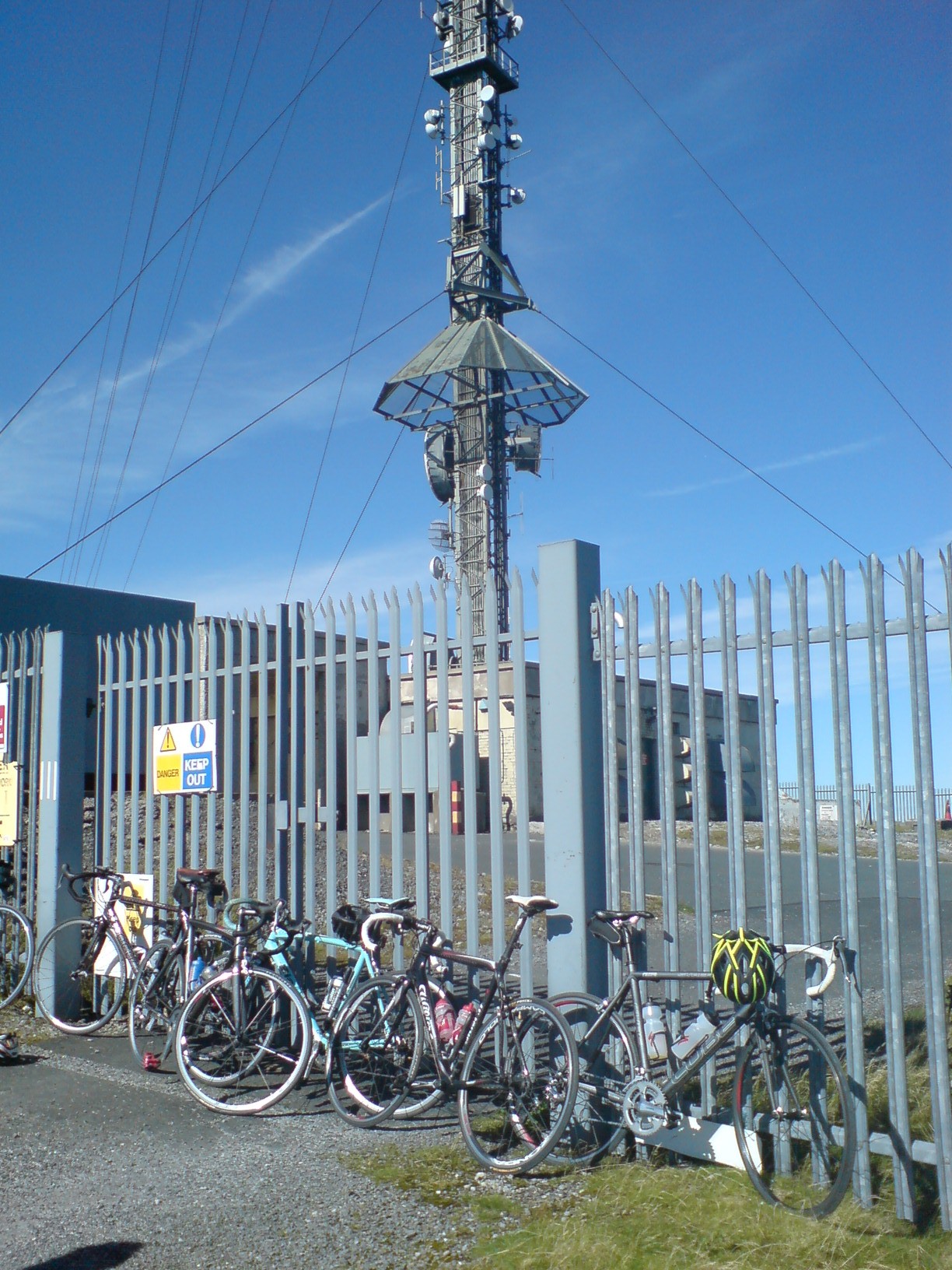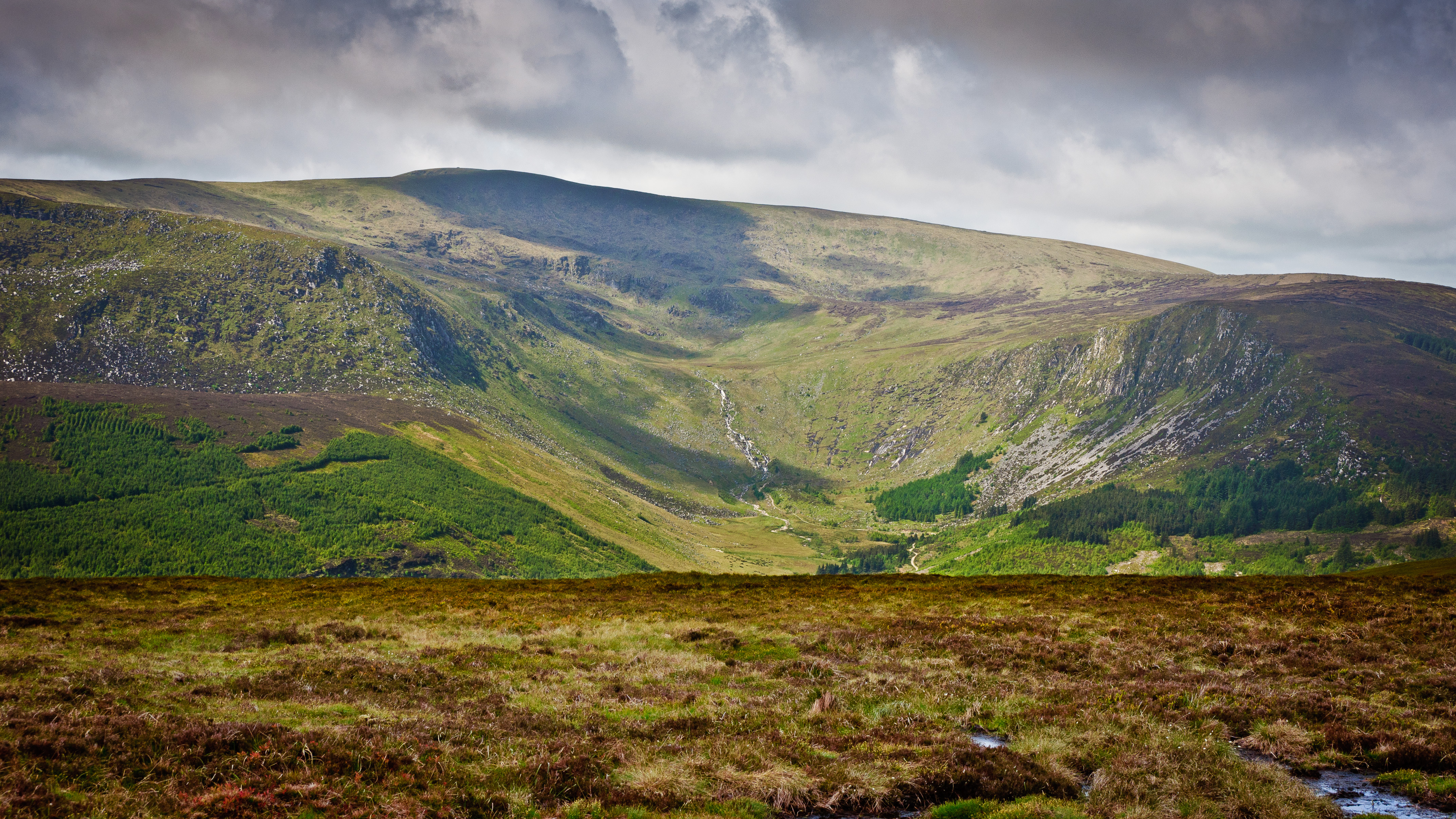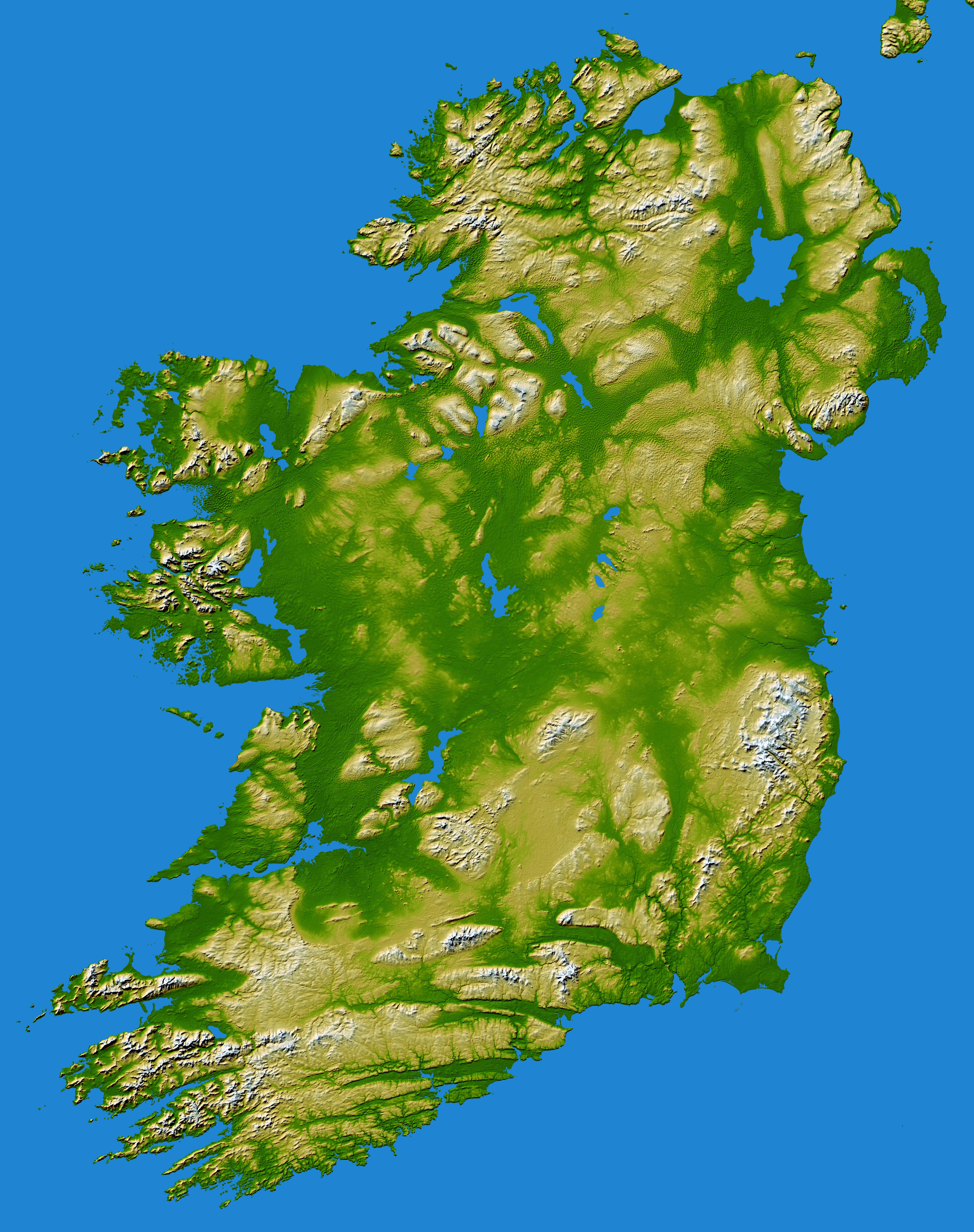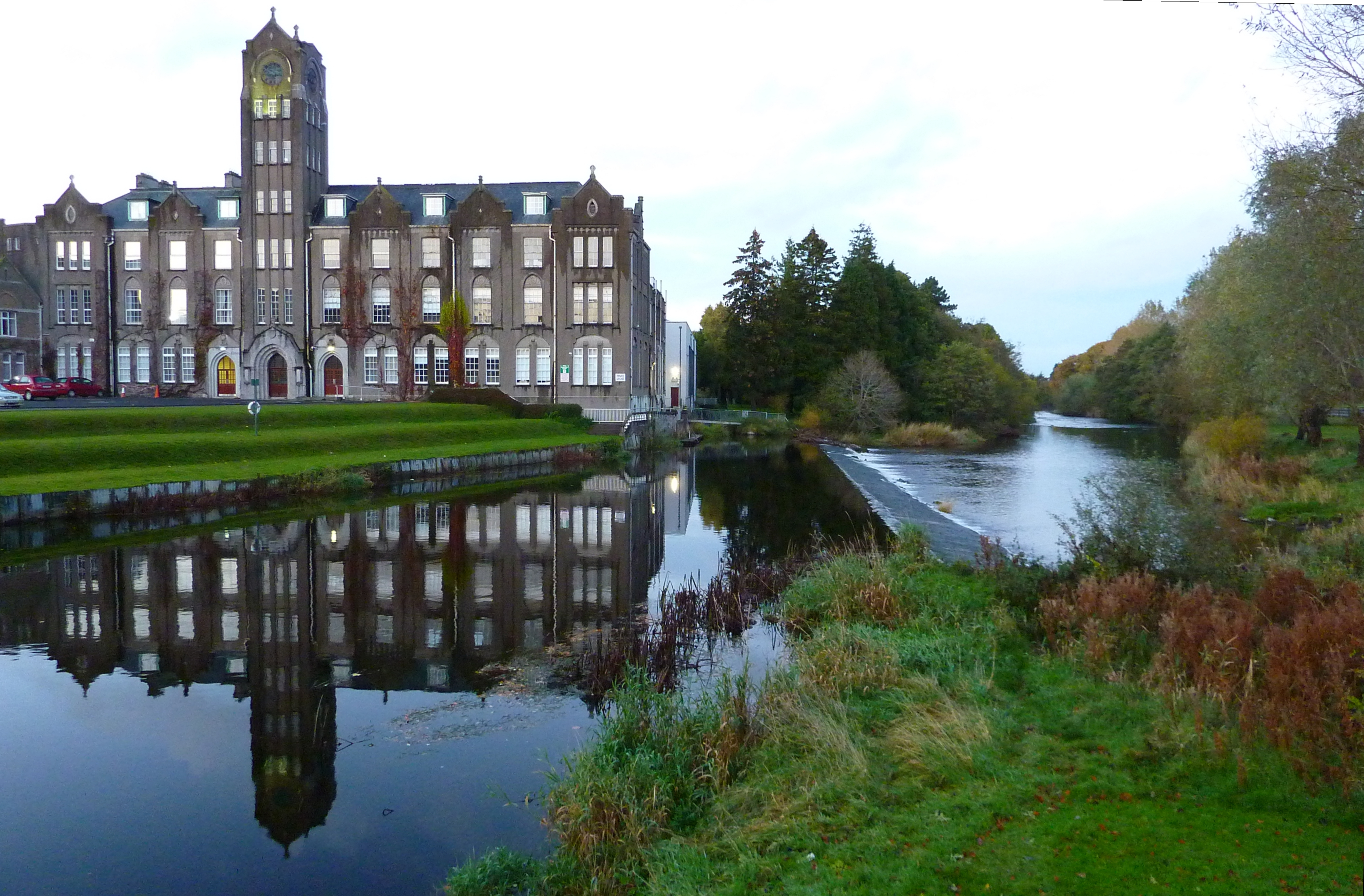|
Kippure
Kippure () at , is the 56th-highest peak in Ireland on the Arderin scale, and the 72nd-highest peak on the Vandeleur-Lynam scale.Mountainviews, (September 2013), "A Guide to Ireland's Mountain Summits: The Vandeleur-Lynams & the Arderins", Collins Books, Cork, Kippure is situated in the far northern sector of the Wicklow Mountains, where it lies on the border of the counties of Dublin and Wicklow in Ireland. Kippure is the County Top for Dublin, and its height and positioning over Dublin city have made its summit an important site for transmission masts, which are highly visible from a distance. Kippure's slopes feed into the Liffey Head Bog which forms the source of the River Liffey. The summit can be easily accessed from the east via a path that lies off the R115 (also called the "Military Road") road along the route to the Sally Gap. Naming According to Irish academic Paul Tempan, "Kippure" is simply a "transliteration of a pronunciation collected locally, but without ... [...More Info...] [...Related Items...] OR: [Wikipedia] [Google] [Baidu] |
County Dublin
"Action to match our speech" , image_map = Island_of_Ireland_location_map_Dublin.svg , map_alt = map showing County Dublin as a small area of darker green on the east coast within the lighter green background of the Republic of Ireland, with Northern Ireland in pink , map_caption = County Dublin shown darker on the green of the Ireland, with Northern Ireland in pink , subdivision_type = Country , subdivision_name = Ireland , subdivision_type2 = Province , subdivision_name2 = Leinster , subdivision_type3 = Region , subdivision_name3 = Eastern and Midland , leader_title2 = Dáil constituencies , leader_name2 = , leader_title3 = EP constituency , leader_name3 = Dublin , seat_type = County town , seat = Dublin , area_total_km2 = 922 , area_rank = 30th , population_as_of ... [...More Info...] [...Related Items...] OR: [Wikipedia] [Google] [Baidu] |
Seefingan
Seefingan often spelt Seafingan ( meaning ''Fingan's Seat'') is a mountain that straddles two county boundaries from its summit in County Wicklow, Wicklow eastwards down into South Dublin, in Republic of Ireland, Ireland. There are extensive views from the summit and there is a large megalithic cairn nearby. Geography At Seefingan is the Mountain peaks of the Wicklow Mountains, 11th highest summit in the Wicklow Mountains, the second highest point in South Dublin after Kippure and the 92nd highest summit in Ireland. It stands at the junction of three ridges, Corrig to the north, Seefin to the southwest and Kippure to the east, and straddles the border between County Wicklow and South Dublin. The headwaters of the River Dodder lie on the eastern slopes of Seefingan, Kippure and Seecawn. The summit is a smooth grassy area but the three ridges are boggy, and particularly difficult to negotiate after rain. There are footpaths but they can be difficult to follow through the boggy ... [...More Info...] [...Related Items...] OR: [Wikipedia] [Google] [Baidu] |
Wicklow Mountains
The Wicklow Mountains (, archaic: ''Cualu'') form the largest continuous upland area in the Republic of Ireland. They occupy the whole centre of County Wicklow and stretch outside its borders into the counties of Dublin, Wexford and Carlow. Where the mountains extend into County Dublin, they are known locally as the Dublin Mountains (''Sléibhte Bhaile Átha Cliath''). The highest peak is Lugnaquilla at . The mountains are primarily composed of granite surrounded by an envelope of mica-schist and much older rocks such as quartzite. They were pushed up during the Caledonian orogeny at the start of the Devonian period and form part of the Leinster Chain, the largest continuous area of granite in Ireland and Britain. The mountains owe much of their present topography to the effects of the last ice age, which deepened the valleys and created corrie and ribbon lakes. Copper and lead have been the main metals mined in the mountains and a brief gold rush occurred in the 18th century ... [...More Info...] [...Related Items...] OR: [Wikipedia] [Google] [Baidu] |
Lists Of Mountains In Ireland
In these lists of mountains in Ireland, those within Northern Ireland, or on the Republic of Ireland – United Kingdom border, are marked with an asterisk, while the rest are within the Republic of Ireland. Where mountains are ranked by height, the definition of the topographical prominence used to classify the mountain (e.g. the change in elevation required between neighbouring mountains), is noted. In British definitions, a height of is required for a mountain, whereas in Ireland, a lower threshold of is sometimes advocated. The lowest minimum prominence threshold of any definition of an Irish mountain is (e.g. the Vandeleur-Lynam), however most definitions, including the International Climbing and Mountaineering Federation (UIAA) criteria, do not consider prominences below as being mountains (e.g. must at least be an Arderin or a Hewitt). Many British definitions consider a peak with a prominence below , as being a ''top'', and not a mountain (e.g. must be a Marilyn ... [...More Info...] [...Related Items...] OR: [Wikipedia] [Google] [Baidu] |
MountainViews Online Database
In these lists of mountains in Ireland, those within Northern Ireland, or on the Republic of Ireland – United Kingdom border, are marked with an asterisk, while the rest are within the Republic of Ireland. Where mountains are ranked by height, the definition of the topographical prominence used to classify the mountain (e.g. the change in elevation required between neighbouring mountains), is noted. In British definitions, a height of is required for a mountain, whereas in Ireland, a lower threshold of is sometimes advocated. The lowest minimum prominence threshold of any definition of an Irish mountain is (e.g. the Vandeleur-Lynam), however most definitions, including the International Climbing and Mountaineering Federation (UIAA) criteria, do not consider prominences below as being mountains (e.g. must at least be an Arderin or a Hewitt). Many British definitions consider a peak with a prominence below , as being a ''top'', and not a mountain (e.g. must be a Marilyn ... [...More Info...] [...Related Items...] OR: [Wikipedia] [Google] [Baidu] |
Glenasmole
Glenasmole ( ga, Gleann an Smóil) is a valley in the Dublin Mountains in the south of County Dublin, Republic of Ireland, Ireland. The valley itself is around in elevation and is surrounded by mountains exceeding in elevation. Kippure, at , is the highest mountain along the valley ridge and is also the List of Irish counties by highest point, highest point in County Dublin. The River Dodder rises at Kippure and flows through the valley, reaching the sea at Dublin Bay. The Glenasmole Valley is an EU-designated Special Area of Conservation. The Dodder feeds the two reservoirs at the centre of the valley, known as the Bohernabreena Reservoirs. The reservoirs, constructed between 1883 and 1887, supply 18.2 million litres of water per day. Despite being within South Dublin's local authority area, the reservoirs and accompanying waterworks are owned and operated by Dublin City Council. The area around the valley is rural in nature and has a population of 415 according to the 2016 Ce ... [...More Info...] [...Related Items...] OR: [Wikipedia] [Google] [Baidu] |
Sally Gap
The R759 road is a regional road in Ireland running south-east to north-west through the Sally Gap in the Wicklow Mountains, from the R755 near Roundwood in East Wicklow to the N81 in West Wicklow. The other route through the Wicklow Mountains from east to west is the Wicklow Gap which is crossed by the R756. The highest point on the road is at the Sally Gap where it crosses the Military Road ( R115), 503m (1,650 ft) (). The road passes through some spectacular scenery, including the corrie lake of Lough Tay below Luggala mountain, in the Guinness Estate; the road gives access to several woodlands car-parks at Lough Tay, which are used to access the mountains around Djouce. The moorlands of the Sally Gap plateau, the Liffey Head Bog on the slopes of Tonduff, form the source of the River Liffey. The road is in length, and in winter can be dangerous or impassable as it is not treated by the Local Authority. Gallery File:R759 Liffey Bridge.jpg File:Sally Gap (Explo ... [...More Info...] [...Related Items...] OR: [Wikipedia] [Google] [Baidu] |
River Liffey
The River Liffey (Irish: ''An Life'', historically ''An Ruirthe(a)ch'') is a river in eastern Ireland that ultimately flows through the centre of Dublin to its mouth within Dublin Bay. Its major tributaries include the River Dodder, the River Poddle and the River Camac. The river supplies much of Dublin's water and supports a range of recreational activities. Name Ptolemy's ''Geography'' (2nd century AD) described a river, perhaps the Liffey, which he labelled Οβοκα (''Oboka''). Ultimately this led to the name of the River Avoca in County Wicklow. The Liffey was previously named ''An Ruirthech'', meaning "fast (or strong) runner". The word ''Liphe'' (or ''Life'') referred originally to the name of the plain through which the river ran, but eventually came to refer to the river itself. The word may derive from the same root as Welsh ''llif'' (flow, stream), namely Proto-Indo-European ''lē̆i-4'', but Gearóid Mac Eoin has more recently proposed that it may derive from a n ... [...More Info...] [...Related Items...] OR: [Wikipedia] [Google] [Baidu] |
Tonelagee
Tonelagee () at , is the 25th–highest peak in Ireland on the Arderin scale, and the 33rd–highest peak on the Vandeleur-Lynam scale.Mountainviews, (September 2013), "A Guide to Ireland's Mountain Summits: The Vandeleur-Lynams & the Arderins", Collins Books, Cork, Tonelagee is situated in the central sector of the Wicklow Mountains range, and sits on the main "central spine" of the range that runs from Kippure in the north, to Lugnaquillia in the south; and in particular, the continuous "central boggy ridge" that runs from the Sally Gap in the north, via Mullaghcleevaun, to Tonelagee. Tonelagee is the third highest peak in Wicklow after Lugnaquilla and Mullaghcleevaun. To the north is the subsidiary summit of Stoney Top , and to the east is another subsidiary summit of Tonelagee NE Top ; between these three summits is the deep "heart-shaped" corrie lake of Lough Ouler. Naming Irish academic Paul Tempan, notes Tonelagee is sometimes spelled Tonelegee and its Irish name o ... [...More Info...] [...Related Items...] OR: [Wikipedia] [Google] [Baidu] |
County Wicklow
County Wicklow ( ; ga, Contae Chill Mhantáin ) is a county in Ireland. The last of the traditional 32 counties, having been formed as late as 1606, it is part of the Eastern and Midland Region and the province of Leinster. It is bordered by the Irish Sea to the east and the counties of Wexford to the south, Carlow to the southwest, Kildare to the west, and South Dublin and Dún Laoghaire–Rathdown to the north. Wicklow is named after its county town of Wicklow, which derives from the name (Old Norse for "Vikings' Meadow"). Wicklow County Council is the local authority for the county, which had a population of 155,258 at the 2022 census. Colloquially known as the "Garden of Ireland" for its scenerywhich includes extensive woodlands, nature trails, beaches, and ancient ruins while allowing for a multitude of walking, hiking, and climbing optionsit is the 17th largest of Ireland's 32 counties by area and the 15th largest by population. It is also the fourth largest of Lein ... [...More Info...] [...Related Items...] OR: [Wikipedia] [Google] [Baidu] |
South Dublin
, image_map = Island of Ireland location map South Dublin.svg , map_caption = Inset showing South Dublin (darkest green in inset) within Dublin Region (lighter green) , area_total_km2 = 222.74 , seat_type = County town , seat = Tallaght , blank_name_sec1 = Vehicle indexmark code , blank_info_sec1 = D , population_total = 278749 , population_as_of = 2016 , population_density_km2 = auto , government_type = County Council , subdivision_type = Country , subdivision_name = Ireland , subdivision_type1 = Province , subdivision_name1 = Leinster , subdivision_type2 = Region , subdivision_name2 = Eastern and Midland , leader_title2 = Dáil constituencies , leader_name2 ... [...More Info...] [...Related Items...] OR: [Wikipedia] [Google] [Baidu] |
Mullaghcleevaun
Mullaghcleevaun () at , is the 15th–highest peak in Ireland on the Arderin scale, and the 20th–highest peak on the Vandeleur-Lynam scale.Mountainviews, (September 2013), "A Guide to Ireland's Mountain Summits: The Vandeleur-Lynams & the Arderins", Collins Books, Cork, Mullaghcleevaun is in the central sector of the Wicklow Mountains range, in Wicklow, Ireland; it is the 2nd highest peak in Wicklow after Lugnaquilla. Mullaghcleevaun lies on the main "central spine" of the whole range that runs from Kippure in the north, to Lugnaquillia in the south; and in particular, it lies on the continuous "central boggy ridge" that runs from the Sally Gap to Tonelagee. To the east of the main summit of Mullaghcleevaun is Mullaghcleevaun East Top . Below the summit of Mullaghcleevaun lies the corrie lake of Cleevaun Lough, Wicklow's highest natural lake at . Naming According to Irish academic Paul Tempan, Patrick Weston Joyce notes that Mullaghcleevaun was named after a "cradle-lik ... [...More Info...] [...Related Items...] OR: [Wikipedia] [Google] [Baidu] |







